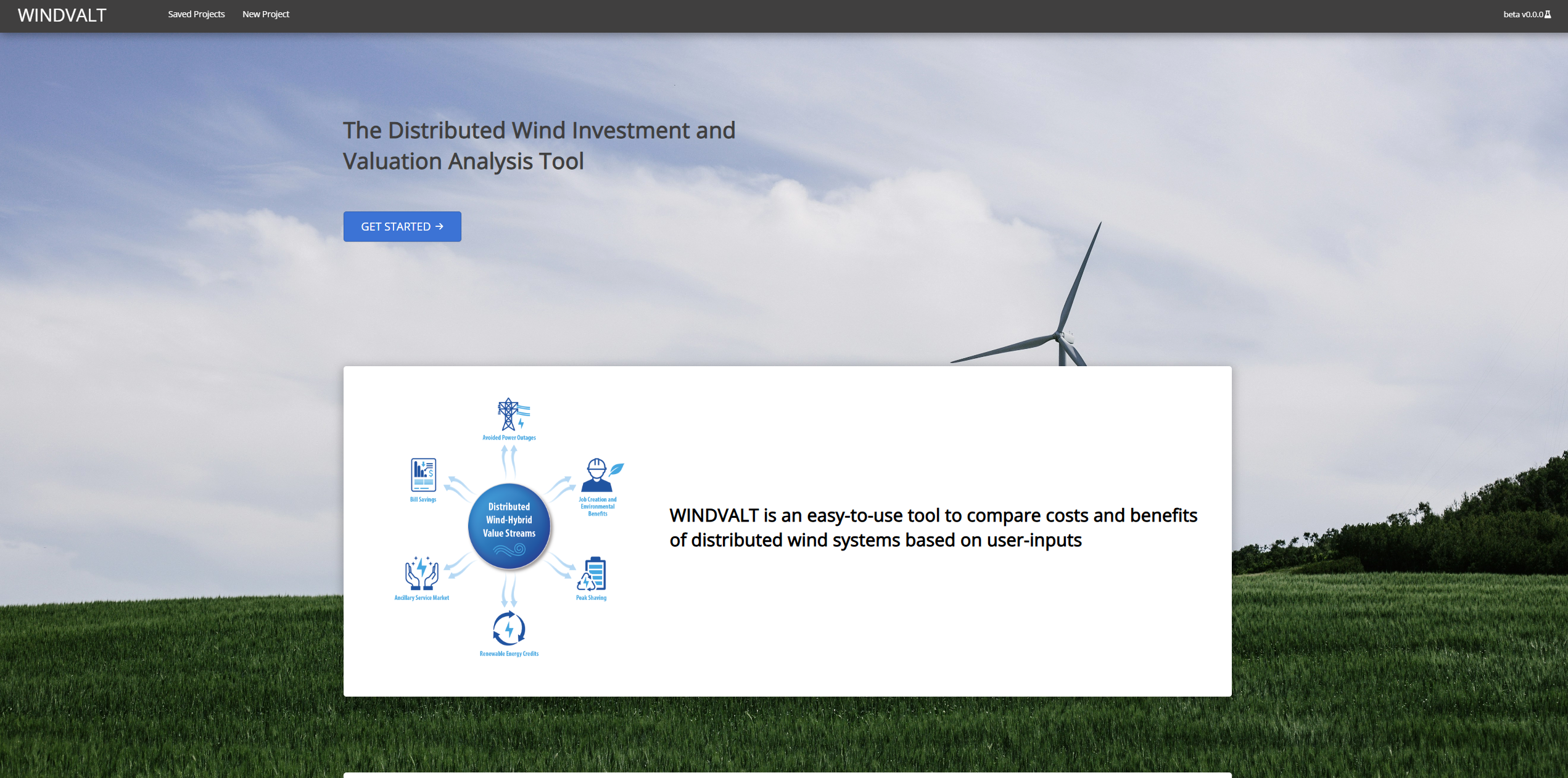Distributed Wind
Distributed Wind
Enabling wind energy for on-site
and local power generation
Enabling wind energy for on-site
and local power generation
On-Site Wind for Rural Loads
While rural areas can have strong distributed wind potential, the suitability of matching distributed wind (DW) to rural loads is not well understood. To address this knowledge gap, Pacific Northwest National Laboratory (PNNL) supports the On-Site Wind for Rural Load Centers project (led by Idaho National Laboratory), which focuses on evaluating rural energy needs and providing tools and resources for communities considering DW in microgrids, distribution networks, and hybrid systems (DW-hybrids). This project also aims to provide replicable templates for DW-based hybrid systems that maximize value streams and meet local resilience requirements by matching resources to local load demands in an equitable way.
As part of this project, PNNL developed WINDVALT, a valuation software tool that provides stakeholders with an easy-to-use, transparent, and consistent method for assessing the costs and benefits of distributed wind projects. Users can select a location and turbine type, then the tool walks them through value stream inputs for either behind-the-meter or front-of-meter use. The tool outputs net present value of the project, annual cash flows, and a breakdown of costs and benefits, which aids in project evaluation and decision-making. Continued work on WINDVALT includes incorporating energy storage to evaluate DW-hybrid systems.

Another key output for this project is PNNL’s Energy Equity Opportunities in Distributed Wind Hybrid Systems for Rural Loads report, which defines energy equity opportunities achievable with DW-hybrid systems for rural loads by the core principles of energy justice. The report also proposes an equity framework for DW-hybrid systems. A catalog of equity resources, metrics, technology-agnostic frameworks, and best practices—formatted to be compatible with the Microgrids, Infrastructure, Resilience, and Advanced Controls Launchpad Valuation Framework—also supports the report. Findings in this report can help guide communities as they evaluate how DW-hybrids can serve rural loads and improve equity outcomes.